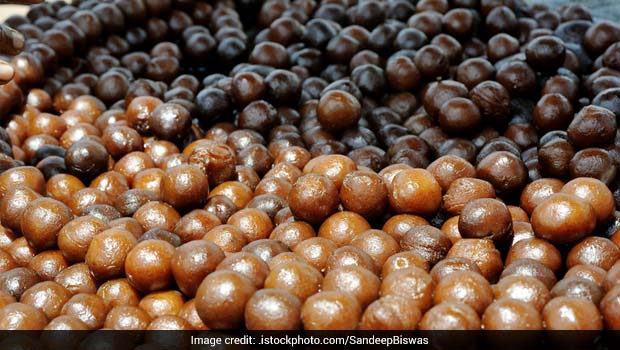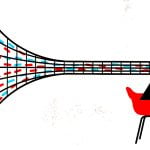

You may call it a close cousin of the nation’s favourite sweet – Gulab Jamun, but the Kala Jaam or Kala Jamun deserves more attention and praise. These sugar dipped rounds made of khoya, and cottage cheese are one of the most loved Bengali sweets and have captured a unique place in our hearts despite being considered as one of the variants of the Gulab Jamun just like the Pantua or the Ledikenni (a cylindrical shaped Gulab Jamun believed to have been invented by Bhim Chandra Nag for Lading Canning, the wife of Charles Canning who was the Governor-General of India during 1856-62)
Kala Jaam, or Kalo Jaam, or simply Kala Jamun is the black or dark purple variant of a Gulab Jamun. In his book, The History of Indian Food, renowned food historian K.T. Acharya defines Gulab Jamun as, “Balls of chenna or khoya or paneer, kneaded using maida and the deep fried till they become dark brown on the surface, and then gently boiled in a medium-thick sugar syrup, sometimes flavoured with rose essence.” Gulab jamun gets its brownish-red hue because of the sugar in the khoya. Kala Jaams, on the other hand, are coated with sugar or some sugar is added in the batter before frying which gives these sweet balls their blackish color.
Chef Ashish Massey from the Ancient Barbeque in Noida explains, “The recipe of the Gulab Jamun and the Kala Jaam essentially remains the same. It is just the temperature at which they are fried and the duration that makes the difference. In restaurants where we have to prepare the order in bulk, we fry the dough balls of Gulab Jamun and Kala Jaam in the same Kadhai, except that the Gulab Jamuns are taken out a bit earlier than the Kala Jaams. Kala Jamun is then fried at a higher temperature for about 5 to 7 minutes and then soaked in the sugar syrup. This gives them the characteristic black color and a more crisp texture as compared to Gulab Jamun. While cooking them on high heat, the khoya caramelizes giving it a golden-sugary centre which you will not find in a Gulab Jamun. Also, you usually serve Gulab Jamun at hot or warm, but Kala Jaam is traditionally served at room temperature.” He further adds, “Every chef has his own recipe. I include the sugar while kneading the dough. When fried, it is this sugar that caramelizes and gives the Kala Jaam a distinct black colour and a course texture.”
The traditional recipe of Kala Jaam used plenty of sugar syrup either khoya, paneer or chenna to make the balls. Chef Ashish tells us, ‘Sometimes you can also add cornflour to the dough to give your Kala Jaam a more crispy texture. People are getting increasingly inventive with the traditional recipe by including nuts and raisins and even chocolate and orange extracts in the batter to give it a modern spin.”
If you’re in Kolkata, you can find some of the best Kala Jaams at Girish Chandra Dey and Nakur Chandra Nandy, Mouchak at Gariahat Road, and Balaram Mullick and Radharaman Mullick in Bhowanipur.
[“source-food.ndtv”]




